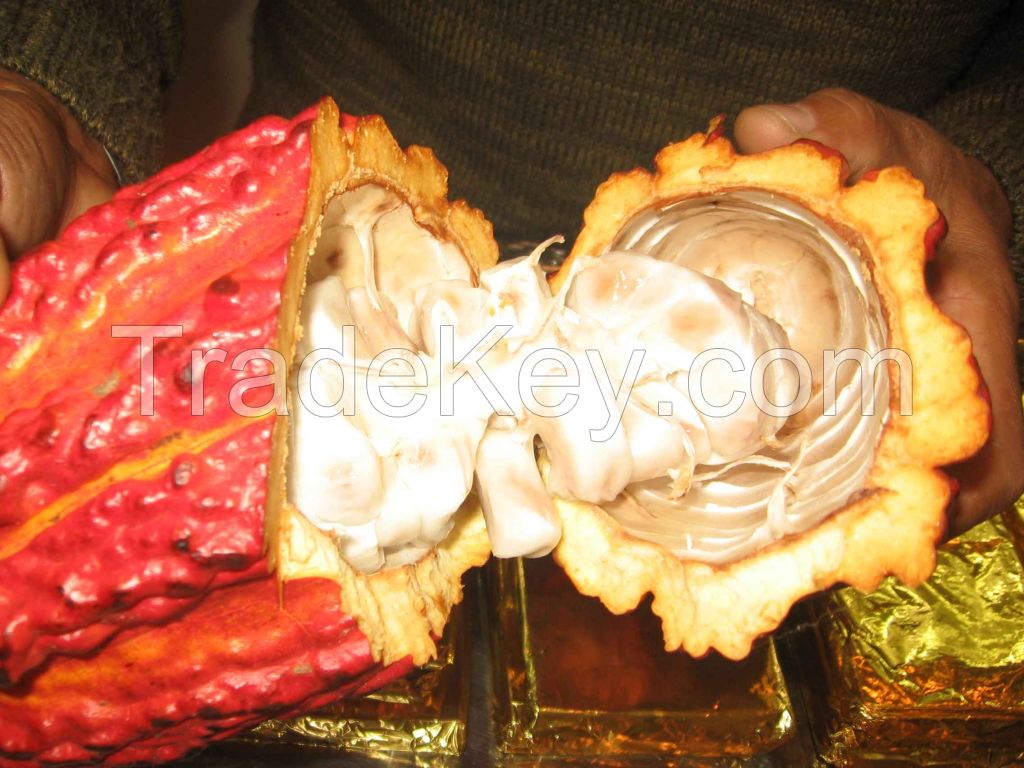


FOB Price
Get Latest Price|
- Minimum Order
Country:
Peru
Model No:
-
FOB Price:
Place of Origin:
-
Price for Minimum Order:
-
Minimum Order Quantity:
-
Packaging Detail:
-
Delivery Time:
-
Supplying Ability:
-
Payment Type:
-
Product Group :
-
Contact Person Sevidoni
Chincha Alta, Ica
Dark, Milk Chocolate and White
criollo cacao beans are grown mainly in the north of Peru
in the region near Piura, just 4 degrees south of the Equator. Most
of the year, the climate is dry, but during January, February and
March large amounts of precipitation fall to keep a tropical-arid
climate. Only recently the quality and rarity of the regions cacao
have been properly recognized. Prior to this, white cacao beans had
often been regarded as a defect due to an abnormality of the cacao
pods, and sold to the national market for making cacao powder.
Genetically speaking, white beans have fewer bitter anthocyanins,
which produce a more mellow-tasting, less acidic chocolate.
Usually white beans are mutations that happen only when trees are
left undisturbed for hundreds of years, such as the case in a
remote area like this.
Today in Peru, these
white beans are highly prized and often called Manjar de los
Dioses, or Gods Nectar.
This cacao pod is filled with a whitish, viscous pulp embedded with
seeds, and inside these seeds are the beans.
Unfermented white beans have a milky color and are permeated
by aromas like citrus nuts, honey, and even a hint of toast.
The percent of cacao butter in these nibs reach *0 to *0% , making
them far richer in fat for a more fluid and buttery chocolate.
Chocolate made from **0 percent white beans is extremely expensive
so often, chocolatiers will create a mix of beans.
To go from the nibs to
chocolate is a long process that involves the first critical step
of fermentation of the beans, typically lasting **7 days to avoid
the bean from germinating. Fermentation also produces the flavor
profile that will develop when the beans are roasted.
Post-fermentation, the beans are dried out in the sun, continuing
to develop their aromas and flavors. Next, the beans are cleaned
for roasting, which happens at ******0°C depending on the type of
bean to reduce the moisture content of the bean to less than
2%.
During roasting, the beans are crushed to separate the nibs from
the shell. The nibs are the base to make the cacao
butter.
With the nibs ready,
let the grinding begin.
The chocolatier must grind as much as possible to make the
chocolate flow, they are looking for that secret ingredient…cocoa
butter.
The particles need to get as small as possible so that the butter
is not grainy. It should feel smooth and soft in the mouth. After
this stage, the chocolate mixture, often called liquor is left to
rest for about a month and allow the flavors to further
develop.
After a month or so,
its time for mixing and refining. Here, sugar is added with the
cocoa liquor to definte the texture and acidity of the
chocolate.
The chocolate needs to be thoroughly refined or it will have an
unpleasant sandy texture. At this point, additional aromatics like
natural vanilla bean essence are added before moving to conching.
Conching is really where the magic happens.
Durign this process, the chocolate becomes silkier and smoother.
Its acidity is decreased and the flavors and aromas are rounded
out. Its only after conching that the flavor of chocolate becomes
uniform and its this step where each chocolatier puts his/her
signature style on the chocolate being produced.
In fact, when working with the white cacao beans from the north of
Peru, the countrys top chocolatiers agree that its texture becomes
extremely smooth when melted, with a full-bodied, nutty flavor that
is not bitter. When made into *5 or *0% (dark chocolate), the
result is a pure, intense, deep, chocolate that has the intensity
and depth of a good Italian espresso in the mouth. Amazing
If you are interested, please contac me
Sevidoni Internacional
| Country: | Peru |
| Model No: | - |
| FOB Price: | Get Latest Price |
| Place of Origin: | - |
| Price for Minimum Order: | - |
| Minimum Order Quantity: | - |
| Packaging Detail: | - |
| Delivery Time: | - |
| Supplying Ability: | - |
| Payment Type: | - |
| Product Group : | - |